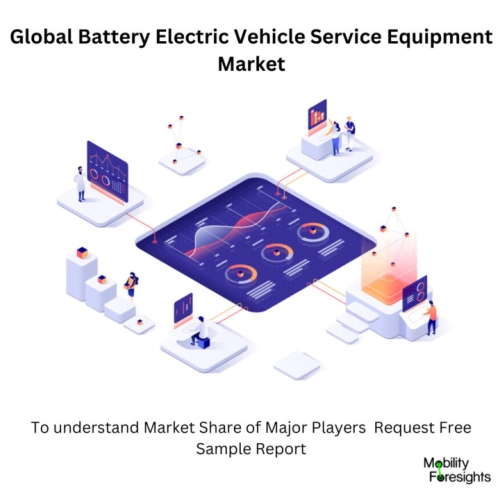
- Get in Touch with Us

Last Updated: Apr 25, 2025 | Study Period: 2024-2030
Equipment used to assist the charging, upkeep, and repairs of battery electric cars (BEVs) is referred to as battery electric vehicle service equipment. The special needs of BEVs, which rely on electric power stored in batteries for propulsion, are specifically catered for by this technology.
Various parts such as charging stations, charging cables, portable chargers, battery diagnostic instruments, battery management systems (BMS), and battery swapping systems are included in the battery electric vehicle servicing equipment.
BEV owners and service providers can charge the battery of the vehicle, run diagnostics, manage and monitor the battery's health, and ease battery maintenance and repair thanks to these tools and infrastructure.
For increasing the adoption of BEVs, assuring their effective functioning, and providing a seamless charging and maintenance experience for BEV owners, it is crucial that battery electric vehicle service equipment be accessible and has a wide variety of uses.

The Battery electric vehicle service equipment accounted for $XX Billion in 2023 and is anticipated to reach $XX Billion by 2030, registering a CAGR of XX% from 2024 to 2030.
Tesla Inc. created the high-speed electric car charging network known as Tesla Supercharger. It provides Tesla owners with quick and simple charging, allowing them to swiftly recharge their vehicle's battery on lengthy journeys.
Tesla owners have access to a dependable charging infrastructure thanks to the placement of supercharger stations along major thoroughfares and at strategic locations.
Tesla Superchargers' cutting-edge technology and potent charging capabilities enable them to quickly and efficiently transfer a considerable quantity of electricity to a vehicle's battery, cutting down on charging times and obstructing traffic.
Long-distance electric travel is supported by the huge network of Superchargers, which is essential for encouraging the broad use of electric vehicles.
| Sl no | Topic |
| 1 | Market Segmentation |
| 2 | Scope of the report |
| 3 | Abbreviations |
| 4 | Research Methodology |
| 5 | Executive Summary |
| 6 | Introdauction |
| 7 | Insights from Industry stakeholders |
| 8 | Cost breakdown of Product by sub-components and average profit margin |
| 9 | Disruptive innovation in theIndustry |
| 10 | Technology trends in the Industry |
| 11 | Consumer trends in the industry |
| 12 | Recent Production Milestones |
| 13 | Component Manufacturing in US, EU and China |
| 14 | COVID-19 impact on overall market |
| 15 | COVID-19 impact on Production of components |
| 16 | COVID-19 impact on Point of sale |
| 17 | Market Segmentation, Dynamics and Forecast by Geography, 2024-2030 |
| 18 | Market Segmentation, Dynamics and Forecast by Product Type, 2024-2030 |
| 19 | Market Segmentation, Dynamics and Forecast by Application, 2024-2030 |
| 20 | Market Segmentation, Dynamics and Forecast by End use, 2024-2030 |
| 21 | Product installation rate by OEM, 2023 |
| 22 | Incline/Decline in Average B-2-B selling price in past 5 years |
| 23 | Competition from substitute products |
| 24 | Gross margin and average profitability of suppliers |
| 25 | New product development in past 12 months |
| 26 | M&A in past 12 months |
| 27 | Growth strategy of leading players |
| 28 | Market share of vendors, 2023 |
| 29 | Company Profiles |
| 30 | Unmet needs and opportunity for new suppliers |
| 31 | Conclusion |
| 32 | Appendix |